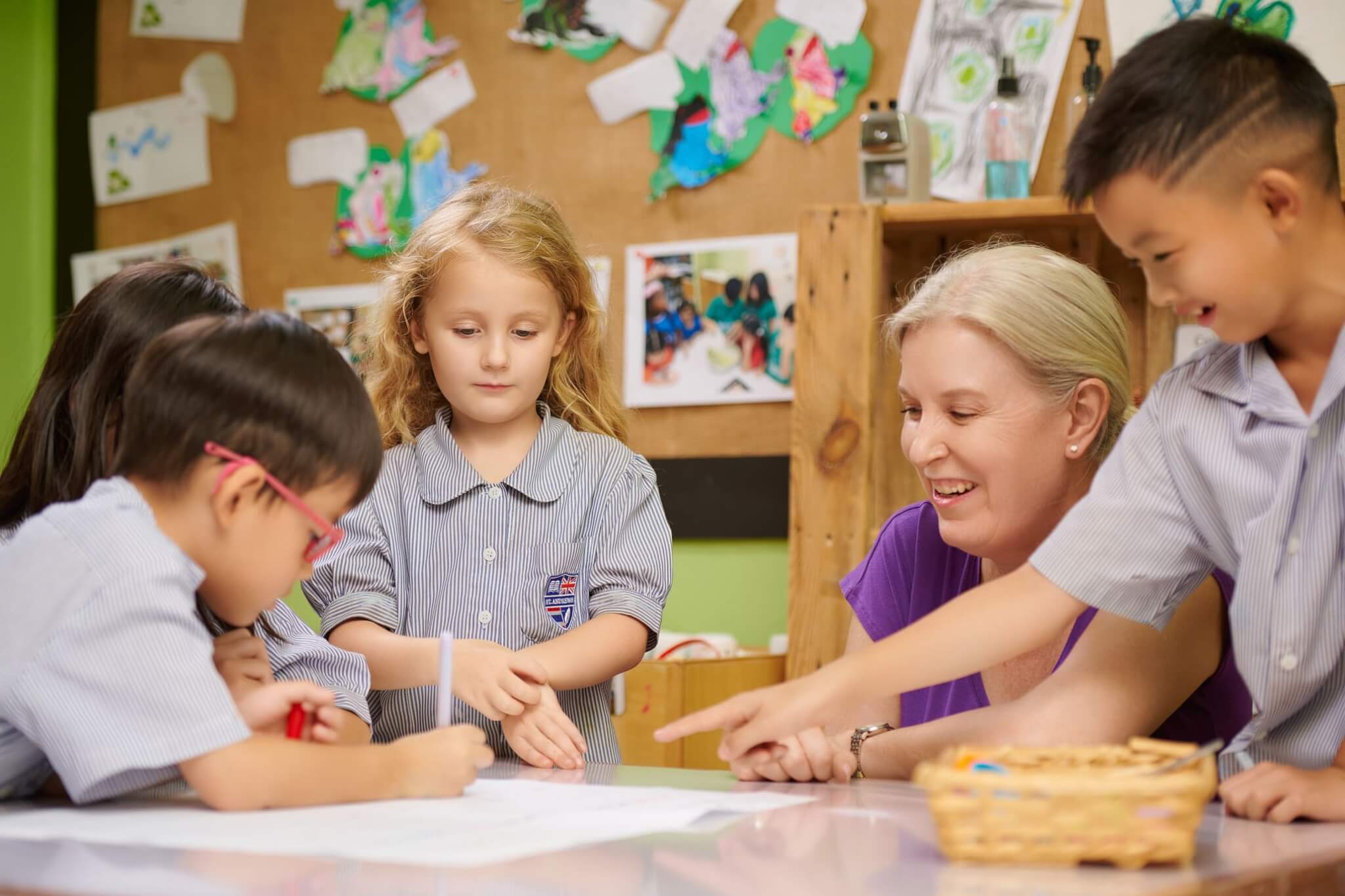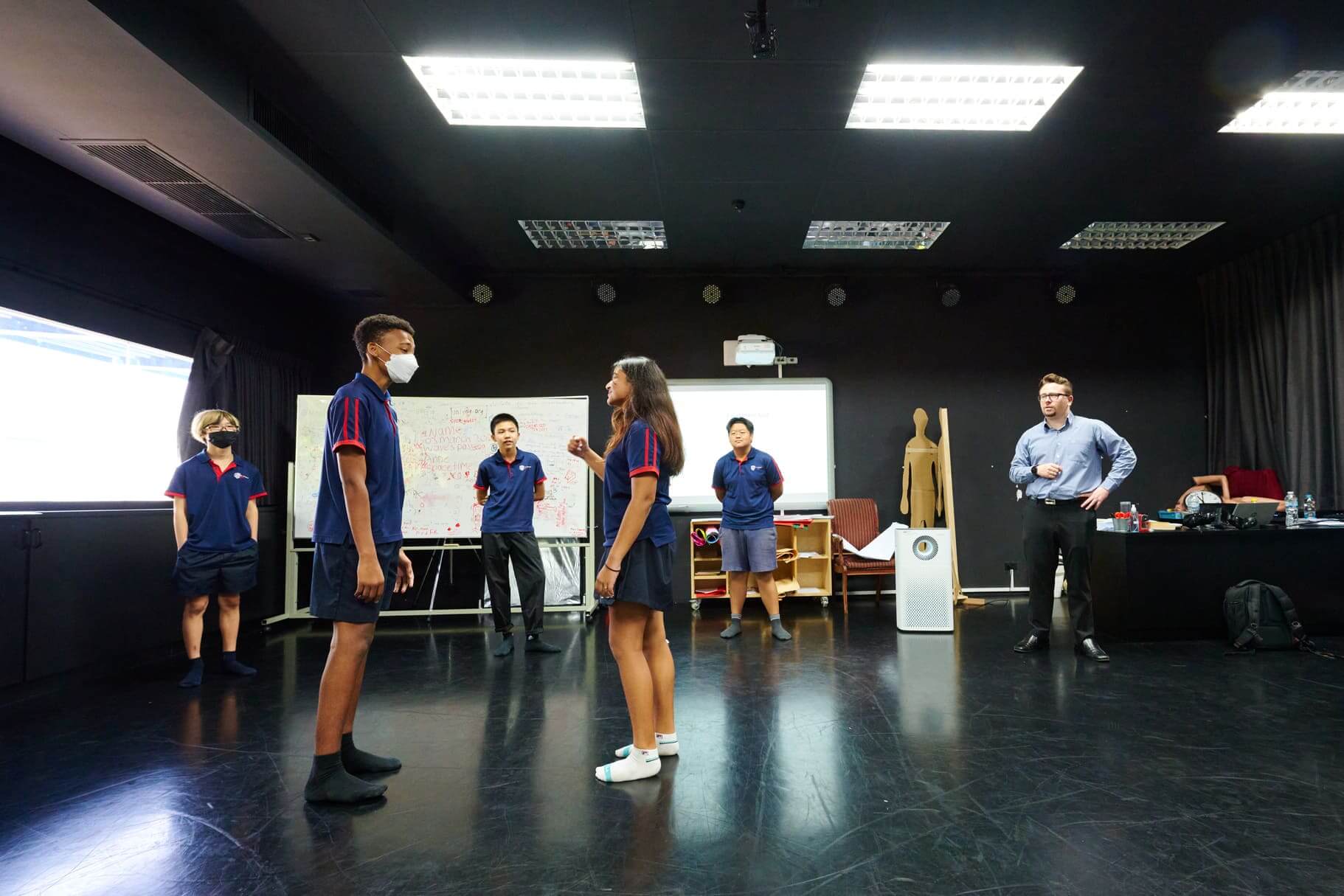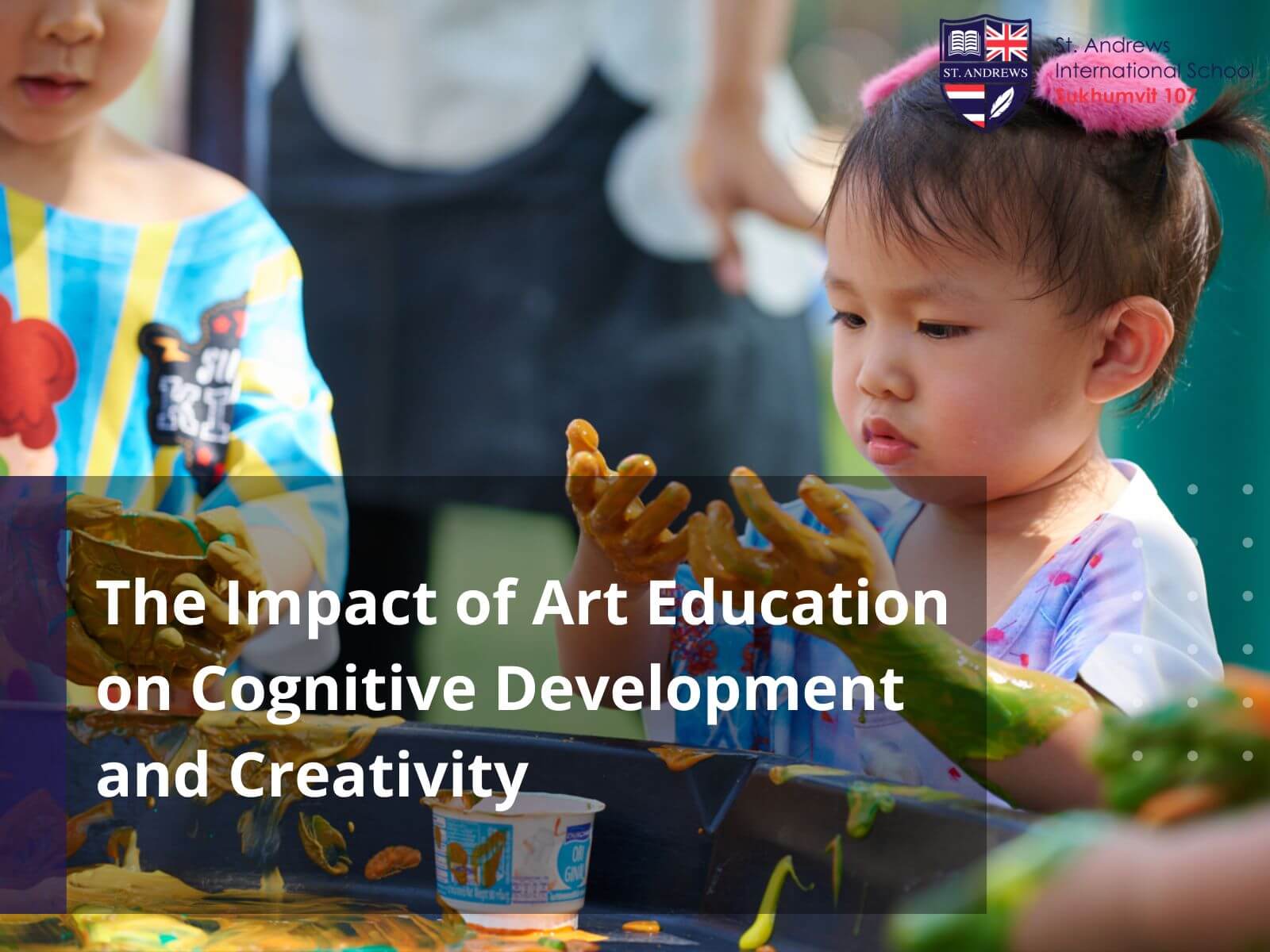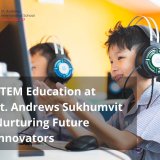With our holistic approach to education, everyone in St. Andrews International School Sukhumvit makes the best use of our knowledge and abilities to shape young minds in order to help them grow into successful, mature, and independent adults in the future.
The holistic development of St. Andrews children includes the development of their mental, physical, social, intellectual, creative, artistic, academic, extracurricular, and co-curricular skills.
Many parents out there underestimate the value of art education and having their children enter the creative field, with them preferring that their kids become doctors or lawyers instead.
However, passionate creatives make up the backbone of the billion-dollar advertising and design industry. Enhancing these children’s artistry and creativity is naturally part of their holistic development, even if they’re not entering the world of creatives.
What is Art Education?
Since St. Andrews Sukhumvit is an international school for young learners, art education is a wonderful fit with our all-encompassing curriculum. Great things start from small beginnings, so as your children grow up, they should be encouraged to reach early for their dreams.
St. Andrews teach year groups from Nursery to Year 13 or children from 2 years old to 18 years old. All throughout their stay in the school, art serves as an important part of their education.
Art education is present as a co-curricular and/or extracurricular subject because it serves as a chance for your children to develop their creativity and ability to think out of the box. The holistic system of learning values self-sufficient problem solving.
“Art education greatly impacts cognitive development. Children who are taught art, for instance, are able to apply their creative thinking abilities to a range of difficult problem-solving situations.” (Teacher Quote)
Our kids’ level of engagement in their activities is evident when they make collages out of torn paper or experiment with paint by smearing it all over their hands or the canvas. Kids adore using art supplies to create and explore with their imagination.
Indeed, children learn a variety of life skills from these art-related experiences. That’s why the art subject is a must for any self-respecting learning institution.
Kids should be exposed to art, especially in their formative years. According to research, early childhood art activities help their brains grow.
Our Teachers Talk to the Children about Their Artwork

The instructors of St. Andrews Sukhumvit make it a point to discuss to the children their artwork. As the kids describe their artwork to their friends, parents, and caregivers, they’re able to describe colour, shape, and size, which helps them to grow linguistically.
Parents should also follow the lead of our teachers to engage with their children more and develop certain life skills related to art education.
-
Posing Open-Ended Questions to Children: When asking about their artwork, our teachers at St. Andrews pose open-ended questions like “Tell me about your picture!” From there, they write down the children’s comments about their artwork.
They then give the kids a chance to elaborate by reading their words back to then. Writing down their words demonstrates respect for their ideas and makes their works easier for others to understand.
-
Giving Children a Vocabulary about Art: Our teachers also discuss colours in a relatable way (traffic-light red, sky blue, grass green). They also give examples of lines (straight, wavy, curvy, rounded, and so forth) to help describe line work.
They also describe what the art looks like when they see it to help build a dialogue with the child about his work. Simple things like, “Your picture has a lot of long lines.” This is another way to help the child discuss his art.
-
Asking the Children about Their Art Process: Our instructors also ask questions such as, “How’d you get tissue paper to look like that?” or “What colours did you use for your oil pastel work?” They also ask about colour mixing and line work.
This encourages the child to discuss the process and experimentation he went through to make his picture, painting, or macaroni art piece look the way it looked when push came to shove.
Art is a Process Instead of a Product
The children’s open-ended play with art stimulates their senses and helps them develop their cognitive, social-emotional, and multisensory abilities.
Their brain development, mastery, self-esteem, and creativity are all further enhanced by art as they grow from elementary school to high school and beyond.
For young children, the most valuable aspect of art is the process of creation, which includes experimentation, exploration, and discovery. The thing they truly create is not as important as the process of creation.
Even if the St. Andrews children don’t create a final product to bring home at the end of the day, they are still learning. The journey has more value than the destination.
Sometimes the kind of learning that can occur is restricted when kids are asked to concentrate on a task’s completion or an end result. Children’s skills will naturally develop through self-expression and creativity.
At St Andrews, we help children realise their innate potential and find the fulfilment that comes from an art education programme.
This way, we can give them the tools of creation and innovation they need to succeed in their current and future endeavours.
Art Education and Thinking Outside the Box

Our teachers encourage their kids to think creatively when they’re taught the arts. These young learners must use their imagination to overcome artistic obstacles when they are producing art, writing stories, or acting in plays.
This approach to creating things straight from their imagination then making it real actually improves their capacity for critical thought and innovative problem-solving.
-
Enhanced Problem-Solving Skills: Studies indicate that youths who participate in art education also typically perform exceptionally well in science and maths. Creativity and artistic freedom also benefit the child’s logic and reasoning.
They can apply their creative thinking abilities when challenging problem-solving scenarios in a variety of academic fields.
-
Improved Memory and Attention: It takes a lot of memory and attention to detail to study and practise the arts. Imagination has links to conceptualisation and realisation.
Art education improves our kids’ memory and focus, whether they’re learning lines for a play, notes for a musical, or the subtleties of a painting technique. These abilities help children succeed academically because they are transferable to other fields.
-
Emotional Intelligence and Empathy: Kids have a special platform to explore and express themselves through the arts. They gain empathy and the ability to connect with others through visual arts, theatre, and music.
This increased emotional intelligence develops their social awareness and understanding of others, which are essential traits for forming deep connections to their peers and appreciating other people’s points of view.
A child’s success in art education is not arbitrary or the result of chance. It instead requires a supportive environment of an international school like St. Andrews Sukhumvit, tenacious children, and unlocking their limitless imagination when all is said and done.
Fostering a Holistic Approach to Art Education
At St. Andrews, we’re dedicated to giving kids the holistic tools they need to succeed in their current and future endeavours by assisting them in realising their fullest potential and the joy that comes from applying their creative side to academics and artistic expression.
As a global organisation that runs schools in the Americas, Asia, Europe, and other regions, the Cognita School Group is an umbrella company of which St. Andrews International School Sukhumvit is a proud part of.
To schedule a school tour and learn more about St. Andrews Sukhumvit, just fill out our online form. For more information, you may also watch our interactive virtual campus tour.






